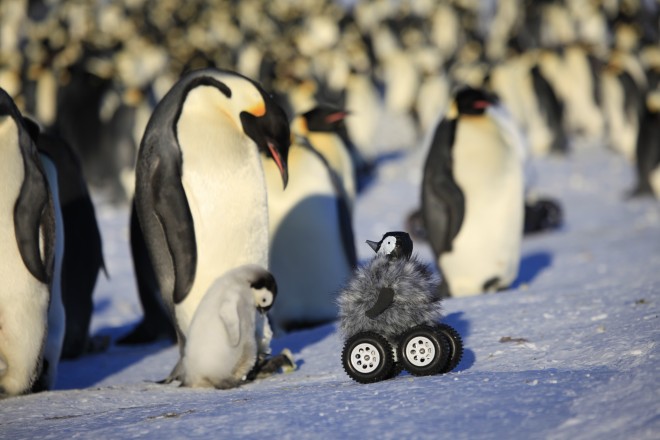It has been believed for decades that the only way to thoughtfully and carefully observe the habits and lifestyles of many species is through human interaction. Unfortunately, many species do not act naturally in the presence of humans. Enter the multi-faceted and recently sophisticated robotic rover.

National Geographic's well-known Serengeti lion project has brought widespread attention to the robotic rover, setting the pace for other similar types of research. Yvon Le Maho is leading an international team at the University of Strasbourg in France to study the behavior of penguins in their native habitat. In order to do so, the team fitted 34 king penguins in Antarctica with heart rate monitors that could be observed using an RFID antenna.
After the penguins had recovered from the heart rate monitor fittings, the University of Strasbourg team sent a traditional four-wheeled rover into the colony of incubating penguins, where the birds responded with some alarm, but eventually let the rover get close enough to read their heart rates.
However, Maho and his team knew they would have to get more creative to study emperor penguins, which are known to be very fearful. So, the researchers invented a robotic rover disguised as a fuzzy penguin chick. Surprisingly, the emperor penguin chicks took so well to the rover that they actually huddled against it as they do to each other, and the adults sang to it and expressed discontent when the disguised chick didn’t respond.
The University of Strasbourg team acknowledges that the success of this experiment opens the possibility to study the important effects of climate change on penguin colonies. Disguised rovers could be adjusted to survey environmental impacts, include cameras, and record audio, among other functions.
For more information on the complete study by the University of Strasbourg on the impact of rovers on research methodologies, visit the Nature Methods Journal.
Via CNET.
Advertisement





